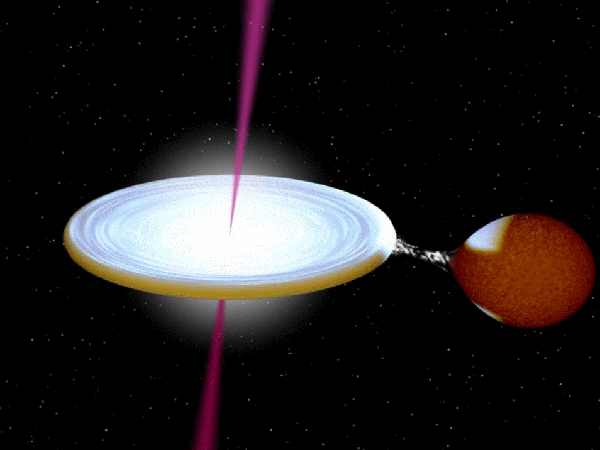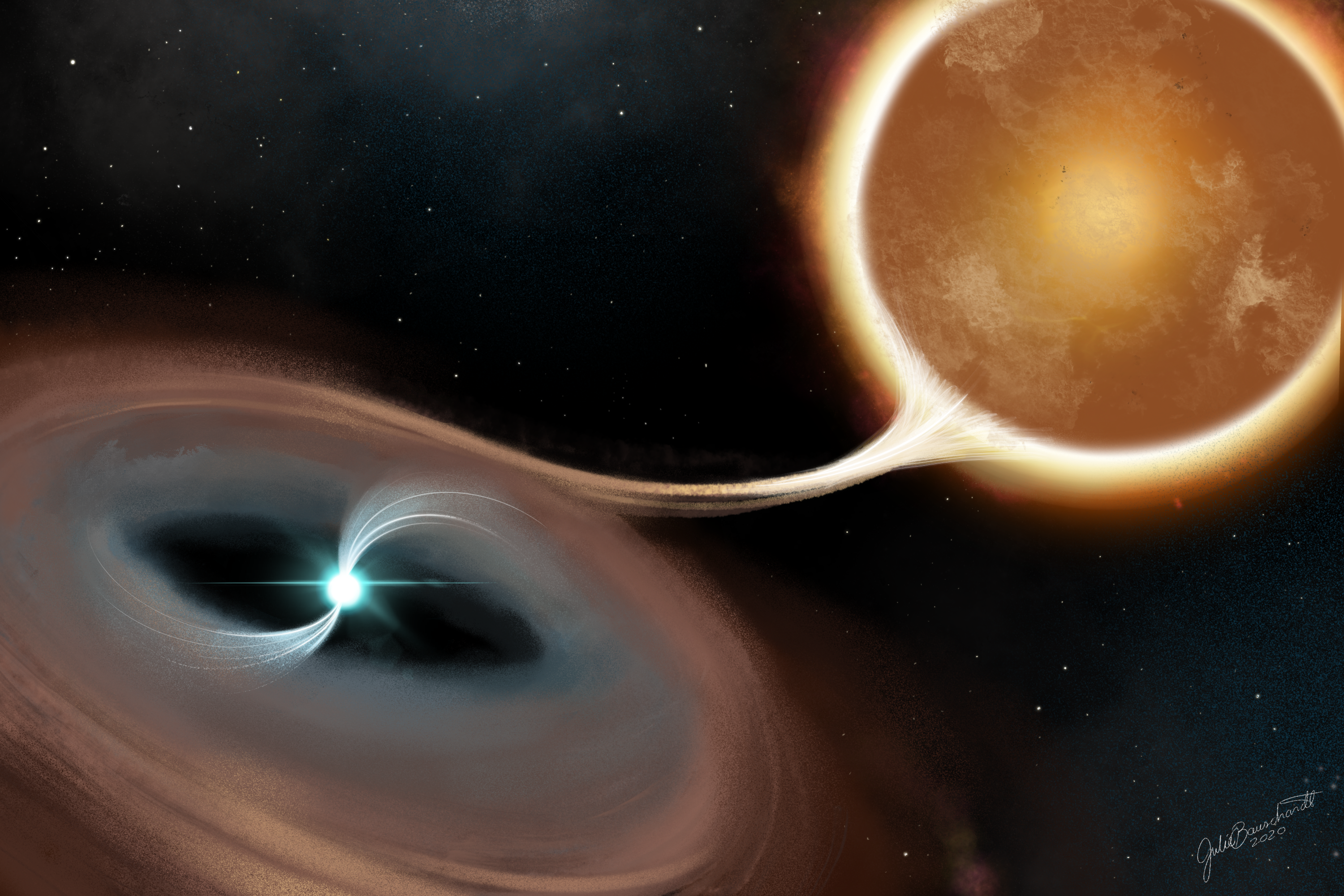Accreting Compact Objects
My main research area focuses on accreting compact objects - binary systems consisting of a stellar remnant of some decription (either a white dwarf, neutron star or black hole) accreting matter from a normal (usually main sequence) star. My research can be subdivided into studies of low-mass X-ray binaries (LMXBs; containing a neutron star or black hole), and accreting white dwarfs (AWDs; often known as cataclysmic variables).
To accomplish my research, I employ a variety of analysis techniques, ranging from X-ray spectroscopy and imaging, to photometry and spectroscopy in the optical and infrared bands. I am also interested in timing analysis and owe a great debt to open source software such as Stingray that make learning such techniques easy and accessible. Astropy has also been a huge help throughout my career.
Low-Mass X-ray Binaries
During my PhD I spent the majority of my time studying LMXBs, focusing in particular on such systems as Swift J1753.5-0127 and V404 Cygni. These exhibit transient outbursts, characterised by a huge increase in flux, followed by a gradual decay on varying timescales of days to months.

After finishing my PhD, my research started to branch out and I became more involved with studies of poorly understood subsets of accreting binaries. Most X-ray transients (such as the two mentioned above) exhibit peak X-ray luminosities of ≳1036 erg s-1. However, a fainter class of X-ray sources known as Very Faint X-ray Transients (VFXTs) display lower peak luminosities of ∼1034-36 erg s-1 exists, which are relatively understudied compared to their more luminous counterparts.
A collaboration which I am part of initiated the Swift Bulge Survey, a biweekly X-ray survey of the Galactic bulge with the Neil Gehrels Swift Observatory, in order to detect new and known VFXTs, characterize their variability, and derive their natures. Near infrared follow-up (led by myself) of sources detected in the survey revealed that binaries containing (sub)giant stars may make a substantial contribution to the VFXT population. See my paper on some of our results from the survey.
Accreting White Dwarfs
Aside from neutron stars and black holes, I also have a keen interest in AWDs, in particular, a subclass of them called magnetic cataclysmic variables (mCVs). These systems consist of white dwarfs accreting material onto their poles from their companions along magnetic field lines. The infalling plasma forms a standing shock above the surface of the white dwarf, with a temperature directly related to its mass.

Modelling of the X-ray spectrum enables us to derive the mass of the white dwarf. I was the PI of a ~1 Ms Legacy Survey of magnetic CVs with the NuSTAR hard X-ray telescope. This survey allowed us to derive the mass distribution of magnetic white dwarfs and draw comparisons to single white dwarfs and non-magnetic CVs, which has important consequences for theories of accretion-nova cycles as well as binary evolution. See our paper on the survey here, and the related NuSTAR news item.
In addition, I have a strong interest in understanding the mysterious "low states" that some intermediate polars (a subclass of mCVs). In 2022, UNR undergraduate Ava Covington published a paper on six such objects that exhibited (seemingly random) transitions to a low-flux state. Using publicly available data from the American Association of Variable Star Observers, Ava performed timing analysis in and out of the low states, finding that some of them showed wholesale changes in their accretion modes as they transitioned. Gaining a complete understanding of the physical mechanisms at work during intermediate polar low states requires combining optical spectroscopy, photometry, and X-ray observations, and is something I am actively working on.
